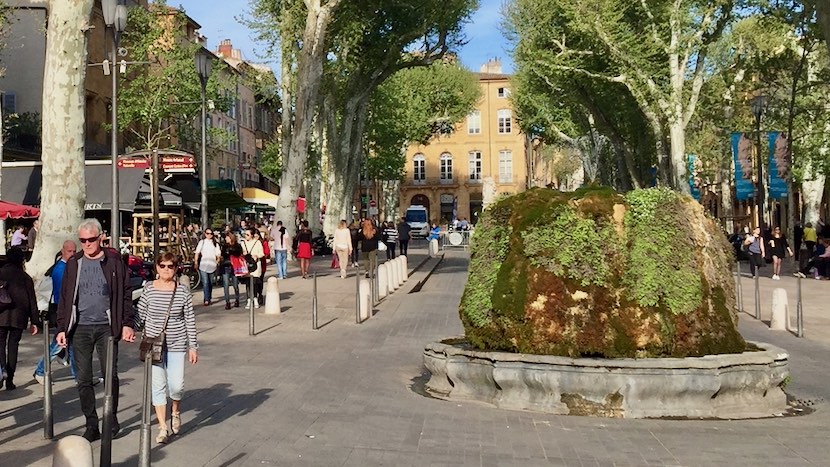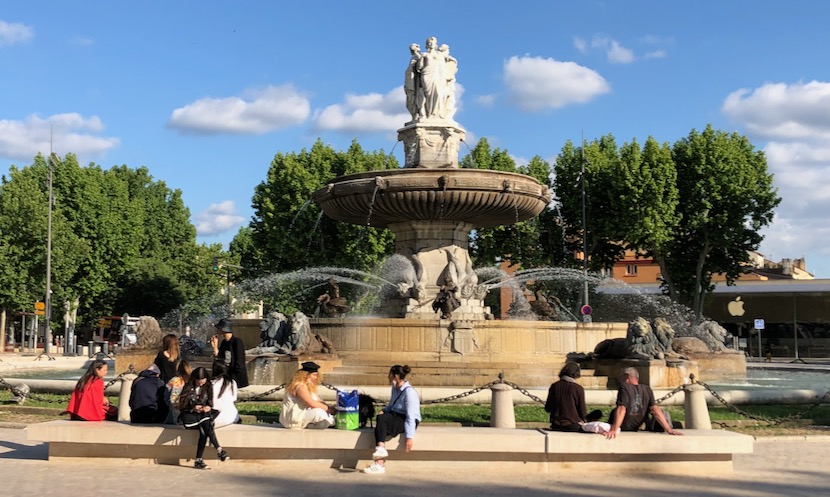
Cours Mirabeau in Aix-en-Provence
At nearly a half of a kilometer in length, the majestic treelined Cours Mirabeau intersects old town Aix-en-Provence to the north and the historically bourgeoisie (and still mostly residential) Mazarin district off to the south.
Aix-en-Provence has more than a 550 historic monuments. One of my favorites is Fontaine d’Eau Chaude (Hot Water Fountain), also known as “Old Mossy” because of the thick layers covering its exterior. It’s one of four fountains that dot the center of the grand Cours Mirabeau. Constructed in 1667 by architect Jacques Fossé, the fountain water flows from a natural thermal spring at a temperature of 18ºC (64º degrees Fahrenheit).
Old Mossy is the oldest of the four landmark fountains along the promenade. The original ornamental carvings of newts that adorned its facade were replaced a few years later with depictions of four children holding the basin (we’ll have to take their word for it).
The imposing Rotonde Fountain (Fontaine de la Rotonde, built in 1860) punctuates the west end, while the King Roi René fountain — designed in 1819 by Pierre-Henri Révoil — surveys from the east. The royal statue of King René depicts him wearing the crown of the Counts of Provence with a scepter in one hand and Muscat grapes (which he introduced to the Provence) in the other.
Named after Honoré Gabriel Riqueti, comte de Mirabeau, a prominent figure of the French Revolution, the Cours Mirabeau dates back to the 17th century when it was first laid out by Archbishop Michel Mazarin as a grand promenade where the city’s elite could see and be seen.
During the French Revolution, the Cours Mirabeau played a significant role in the political and social upheaval of the time. In 1790, the avenue was the site of a major riot, when a group of protesters marched on the city hall to demand better representation in government.
In the 19th century, the Cours Mirabeau underwent further changes as the city grew and new buildings were constructed. Many of the mansions that had been built in the previous century were converted into a bustling commercial center with shops, restaurants, and hotels.
Traffic is restricted to allow only permitted vehicles, making this grand avenue even more pedestrian-friendly for strolling to admire the beautiful architecture or pausing at one of the cafes to people-watch as you sip from a glass of wine and take in the sights and sounds that make the Cours Mirabeau so special.

